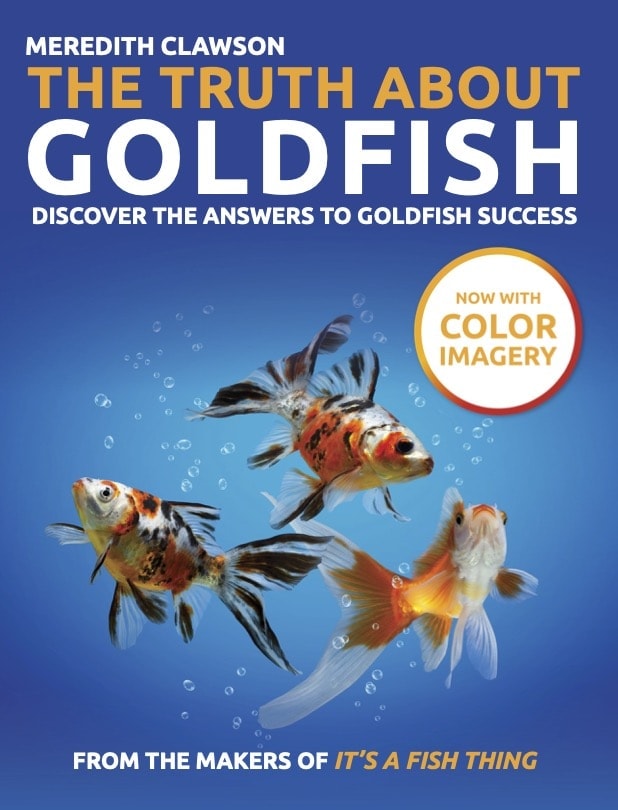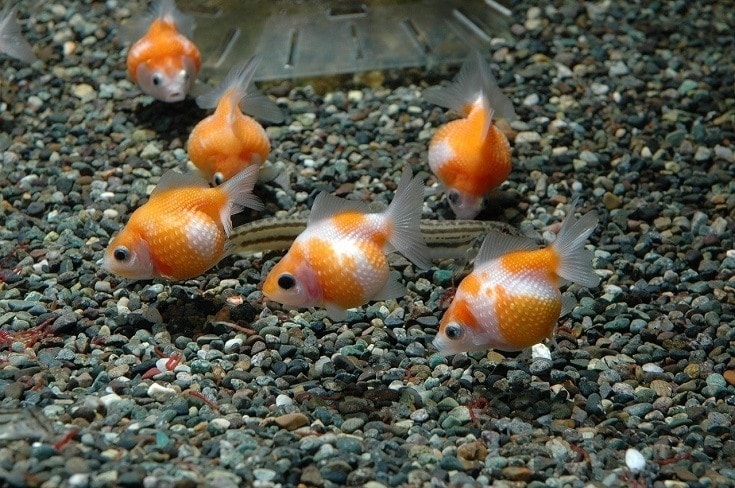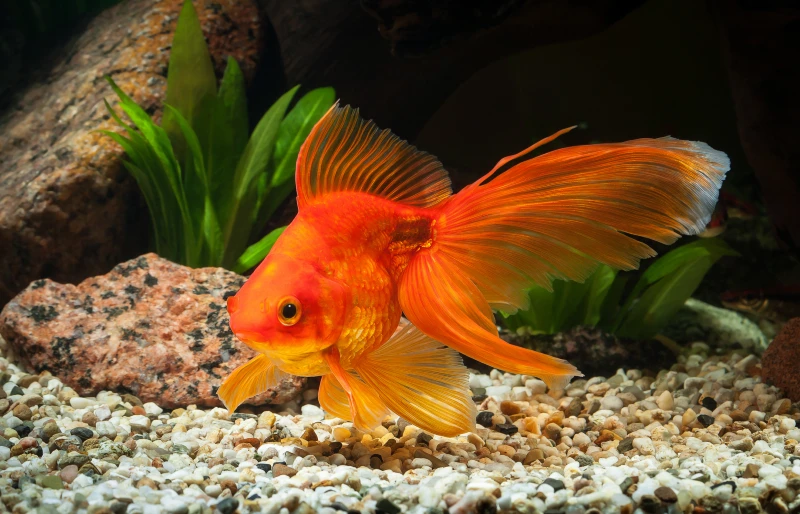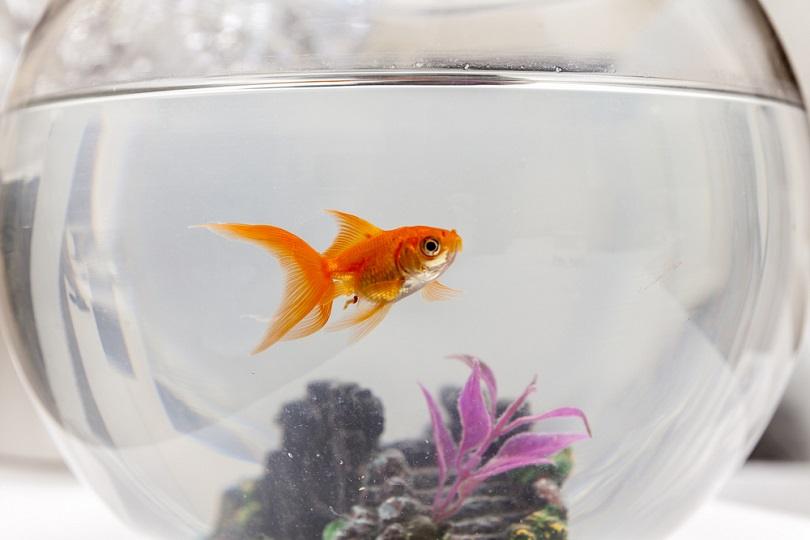Keeping Feeder Goldfish as Pets: 5 Things to Know First

Updated on
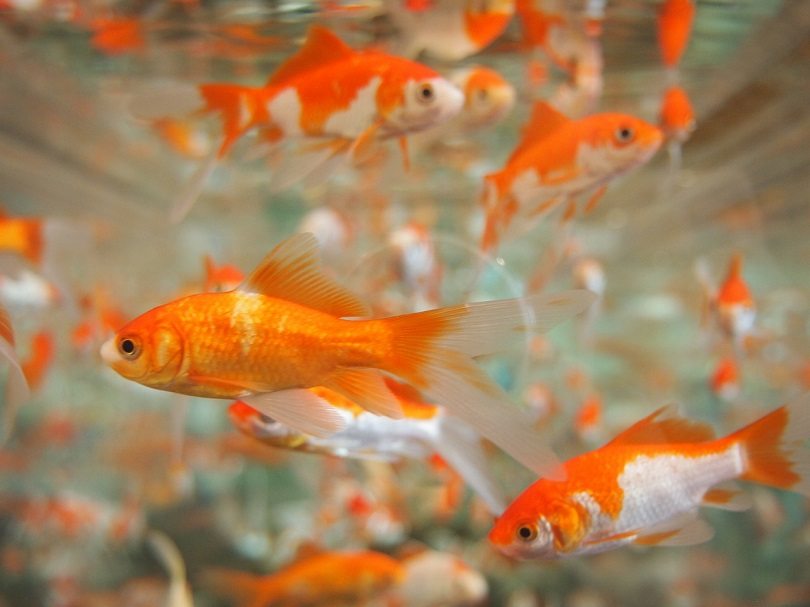
Are you like me, and your heart just melts when you walk by the feeder tank at the pet store? If so, the chances are, the thought has crossed your mind: “Can I keep a feeder goldfish as a pet?”
Well, the answer is yes, with a “but.”
There are some things you REALLY need to know first before you decide to get one—good news and bad news.
First, the bad news:
The 5 Things You Should Know About Keeping Feeder Goldfish
1. Understand the death rates are high
The conditions feeder fish are kept in are extremely stressful.
(And that’s after they’ve been through the stress of transport.)
This means that the cute little guy you’re eyeballing with the special markings might look in decent health at the store…
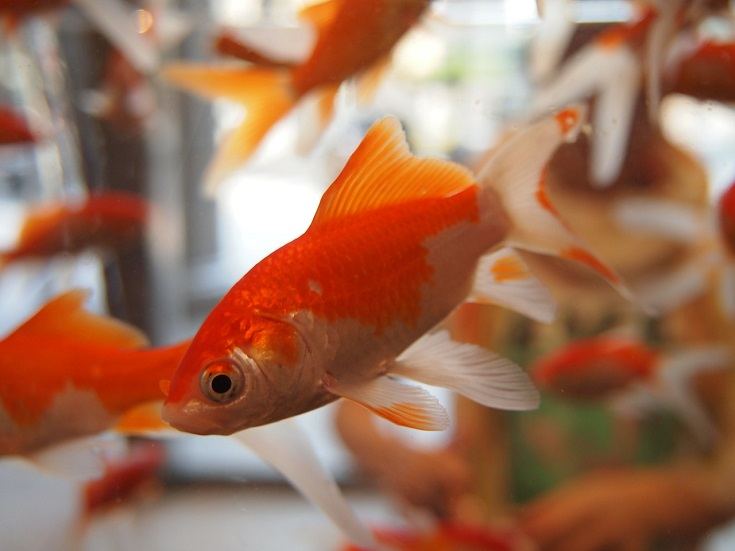
… But that doesn’t mean he will last the week.
Many folks even report their rescue feeder fish not making it in the first 24 hours after getting home. Sometimes the fish have been through too much, and they can’t take any more changes.
(Or they’re sickly internally.)
They may act funny for a few days or die suddenly without warning.
Even if YOU do everything right. I’m not saying every single one is ALWAYS going to kick the bucket (though in some cases, they do).
But you should know that they’re only $0.35 for a reason. They aren’t sold (or treated) to be pets or to last long because they’re in that tank for one reason and one reason only: BAIT.
However, some think of the few dimes they cost as a glimmer of hope for the chance one might survive thanks to you.
Summary:
Be aware that any fish you buy that comes from a feeder tank may not survive.
2. Expect disease risk
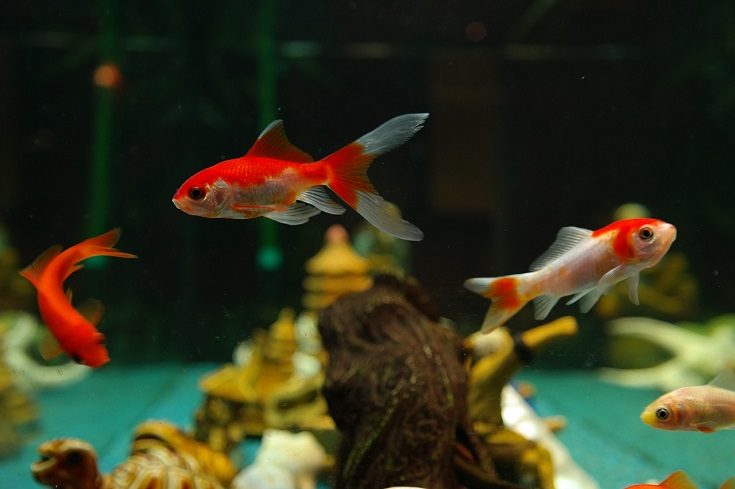
Look, would-be fish vets use feeder fish in their lessons for a reason.
The conditions feeder fish are kept in are PERFECT for transmitting a multitude of goldfish diseases.
If the tank is well-maintained, you might see just a few fish that don’t look quite right.
(Though piles of dead ones are not unheard of in these places.)
But that means everyone else in that tank has been exposed to the sick ones, and in stressful, cramped conditions like that, where immune systems are low, the pathogens are being spread like wildfire.
(Notice how the fish in the above video don’t have enough strength to swim normally, many are showing signs of wasting in the abdomen and clamped fins from possible parasites.)
Some fish diseases have an “incubation time.”
This means the fish might do well for a couple of weeks or even months before succumbing.
Most goldfish carry the (untreatable) Fish TB disease in their systems already. Some live for years just fine with good care.
But, the conditions in a feeder tank can cause it to flare up and get the upper hand on your fish’s immune system.
And the parasites can slowly build up to out-of-control numbers.
This means one thing: MEDICINE. For the best chance of your fish surviving, getting rid of the parasites they likely have is a very good idea.
That said, even if you go through a full quarantine procedure needed where you treat the fish to get rid of as many pathogens as possible, they could STILL die (during quarantine or a month later) just from being put through so much.
“Cleaning up” feeder fish is harder than other fish because so many are on the brink of death before you take them home.
I know. I’ve tried.
Supposing you manage to get rid of all the parasites with the right treatments, it’s not as easy (and sometimes impossible) to cure the fish of other bacterial illnesses.
In the end, this means your “cheap” little feeder won’t be as cheap as you thought.
In that case, you might as well invest a little more in a fish that’s kept in better conditions and thus has a better chance of making it.
Summary:
Most feeders come to you diseased and require special quarantine procedures. Even then, they may still succumb due to contracting an incurable disease.
Okay, so we’ve tackled the sad stuff. Now let’s get to the positive side of things, shall we?
3. They CAN live a long time if they survive
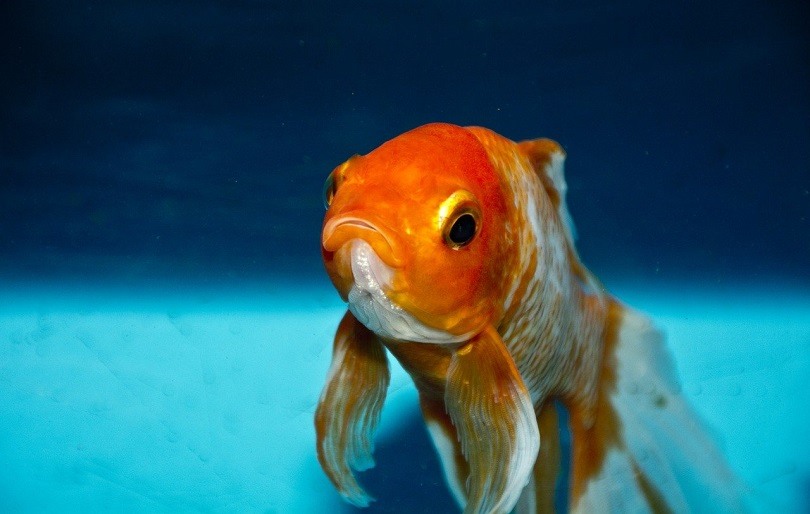
So now you know that the chances of most all feeder fish surviving are pretty slim. But sometimes you get lucky and get your hands on a tough cookie.
If the fish can make it through life in a feeder tank and make it past the first 90 days or so in your home, it may last for MUCH longer than you ever thought.
As in, possibly decades. Who would have thought, right?
Sometimes you get one that, for whatever reason, never picked up anything and was strong enough to deal with the extreme situation.
And IF they survive, they can make a fantastic companion!
Most of the oldest goldfish in the world are Common or Comet goldfish (though the majority came from fairs, not feeder tanks).
- Read More: World’s 9 Oldest Goldfish
4. They CAN grow very large in the right conditions
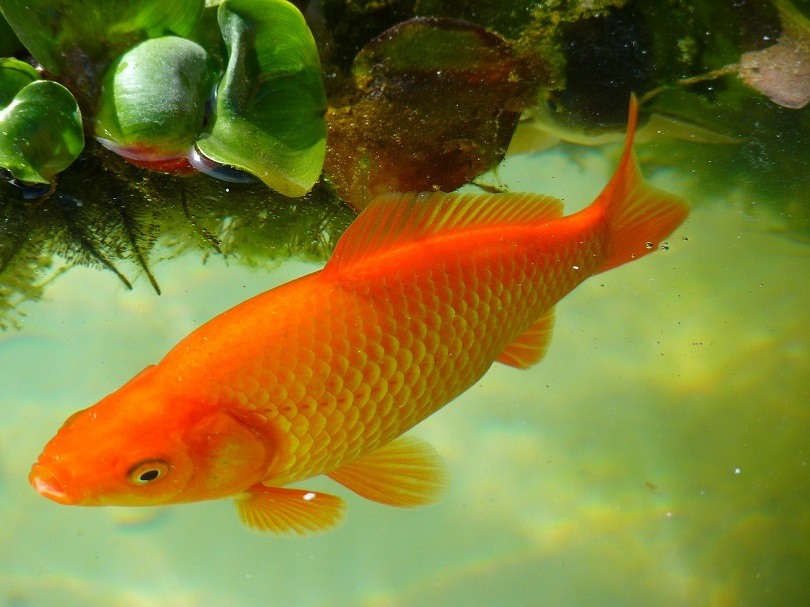
Get this: That little 1″ young Comet or Common you got at the pet store can grow to be a whopping foot-long beast!
WAIT!
Before you let this deter you and get you all panicked about buying a big tank and lots of equipment…
Notice how I said “CAN.” Not all goldfish will, due to various factors.
And their size is actually something you can control if you know what you’re doing. That’s right: it’s all due to something called stunting.
Stunting has got a negative rap in the goldfish community and is poorly understood by many, but you can learn more about it in the following article:
- Also read: Stunted Goldfish
5. They CAN be incredibly hardy
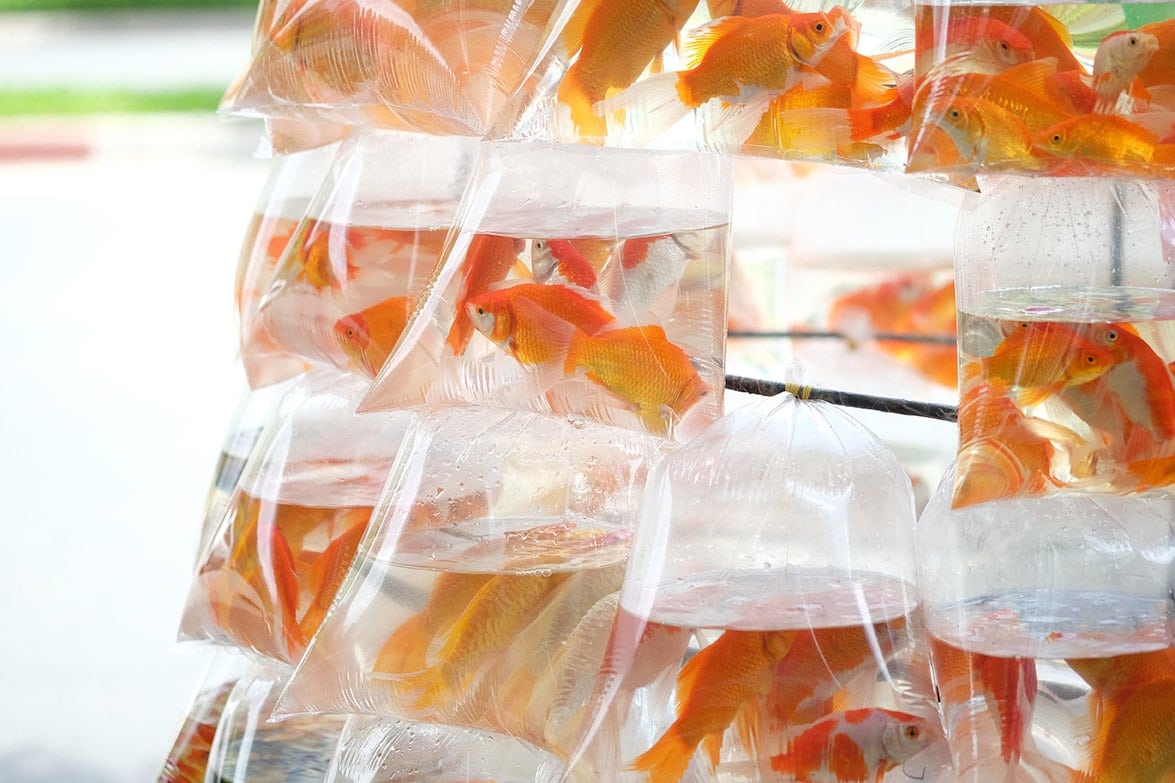
Basically, if a fish can make it through being a feeder, it can make it through (pretty much) ANYTHING.
You’d be shocked at all the crazy survival stories I’ve heard over the years from various folks about what these fish can go through.
All from being flushed down the toilet and retrieved to jumping off a person’s deck into the snow.
(And living for a long time afterward.)
I could go on and on.
These guys are often able to tolerate less-than-ideal water conditions and are more forgiving when it comes to being fed all kinds of things.
I’m not saying you should do that by any means.
But it goes to show how robust a surviving feeder can be for all of the many hurdles life faces them with.
If you're new to the world of goldfish or are an experienced goldfish keeper that loves to learn more, we recommend you check out our best-selling book, The Truth About Goldfish, on Amazon. From diagnosing illnesses and providing correct treatments to ensuring your goldies are happy with their setup and your maintenance, this book brings our blog to life in color and will help you to be the best goldfishkeeper you can be.
Conclusion
Feeder fish are kind of a mixed bag, and you never know what’s going to happen when you get one, whether it will die in 24 hours or stick with you long after your kids are grown and gone.
But if you don’t have any other fish at home already and don’t have to worry about the risk of contaminating your more precious pets, for under two quarters, it might be worth a try to save a fishy life.
What do you think?
Have you ever had pity on one of these little guys?
See Also:
- How to Quarantine New Fish Properly (in 5 Steps)
- Betta Hole in the Head Disease: Symptoms & Treatment
Featured Image Credit: kaori, Pixabay

